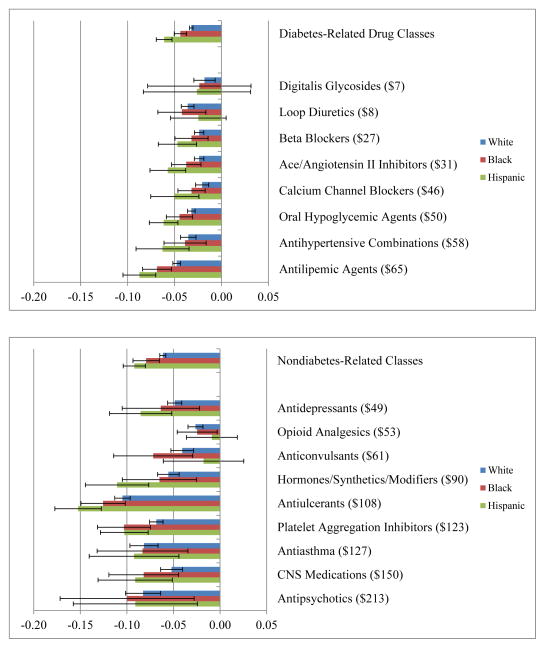Figure 1.
Regression Adjusted Difference-in-Difference in Medication Use (MPR), by Therapeutic Class and Race (percentage point)
MPR refers to the Medication Possession Ratio, which is the fraction of days that a patient “possesses” or has access to medication, as measured by prescription fills. “CNS medications” refers to central nervous system medications. Changes are based on results from multivariate models which control for age, age-squared, gender, comorbid conditions, and socioeconomic status. Prices shown reflect the average price paid in the sample for a 30-day supply of medication in the therapeutic class. Diabetes-related drug classes: Whites who received the low-income subsidy (LIS): n=74,452; Whites who did not receive the low-income subsidy (non-LIS): n=115,333; LIS blacks: n=26,140; Non-LIS blacks: n=6,131; LIS Hispanics: n=29,113; Non-LIS Hispanics: n=4,311. Nondiabetes-related drug classes: LIS whites: n=65,062; Non-LIS whites: n=89,927; LIS blacks: n=21,337; Non-LIS blacks: n=4,373; LIS Hispanics: n=25,083; Non-LIS Hispanics: n=3,464.

